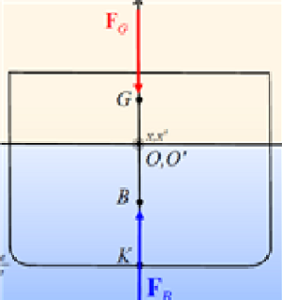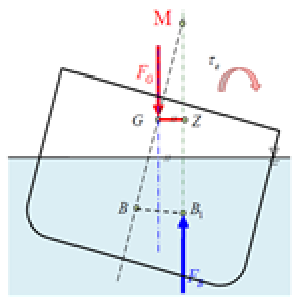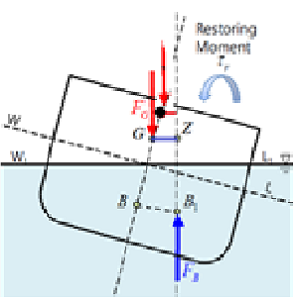In this blog post, we’ll discuss the causes of the Sewol ferry disaster and the importance of resiliency.
On April 16, 2014, the Sewol ferry disaster became one of the most talked about events in Korea. On April 16, 2014, the Sewol ferry sank while carrying sophomores from Danwon High School on a school trip to Jeju Island. The disaster killed 294 people, and 10 bodies have yet to be found. The Sewol ferry disaster hasn’t gone away, and many people are still saddened by the tragedy and interested in finding out what caused this horrific accident.
The Sewol was a safe ship when it was first built, but the complacency of the shipping company, which focused on the profitability of the ship at the expense of the safety of its passengers, took the lives of young students. As the ship was modified to accommodate more passengers and goods, heavy objects were placed on the top of the ship, causing the ship to carry more weight at the top than at the bottom. This raised the center of gravity of the ship, which greatly reduced its stability. Why does a ship’s stability decrease when its center of gravity increases? The answer lies in the basic nature of ships.
That basic property is stability. Stability refers to the property that an equilibrium state is disturbed by an external factor and returns to its initial state over time when the external factor disappears. In the case of a ship, it means that the ship can be tilted by factors such as waves and then return to its original state. Resilience is the ability of a ship to quickly return to its initial state after being tilted. Therefore, the more resilient a ship is, the more stable it is, and you should design your ship to meet the resilience standards set by an organization called the International Maritime Organization (IMO). The Sewol ferry was initially a safe ship because it was designed to meet the regulations.
To see how a ship can return to its initial state when it is tilted, we first need to consider a ship that is stationary and floating. This is called static equilibrium. You’ve probably observed this state many times since you were a child, playing with water and trying to float any object. An object that sinks in water will sink no matter how carefully you try to keep it afloat. This is where we need to understand the interaction of gravity and buoyancy.
All objects with mass are subject to gravity, the force that pulls them toward the Earth, and if gravity alone were to act, they would sink. The force that prevents it from sinking is buoyancy, which is the upward force equal to the weight of the water it pushes away. This is the Archimedean principle, and the famous exclamation “Eureka!” was made famous by Archimedes after he discovered it. Static equilibrium is related to these two forces. For a ship to be in static equilibrium, two conditions must be met. First, the gravitational and buoyant forces acting on the boat must be equal in magnitude, and the center of gravity and center of buoyancy must be on the same line. The center of buoyancy is the center of the submerged part of the boat. An object sinking in water cannot be in static equilibrium because the force of gravity is always greater than the force of buoyancy.



Photo 1 shows static equilibrium, where the buoyancy and gravity forces are equal in magnitude and the center of gravity, G, and the center of buoyancy, B, are on the same line. If the boat is tilted to the right by waves, as shown in Photo 3, the center of buoyancy shifts to B1 in Photo 2 because the submerged part of the boat is further to the right. Here, the magnitude of gravity and buoyancy do not change, so the center of gravity and buoyancy are the same, but the center of gravity and center of buoyancy are not on the same line. When two forces on an object are not on the same line, there is energy that causes the object to rotate, which is called a moment. This moment causes the boat to rotate in the opposite direction to the direction it is tilted, which is to return it to its original state. This is why a boat can be tilted and still return to its original state.
If the straight line drawn parallel to the water surface from the center of mass G and the intersection of the straight line drawn perpendicular to the water surface from the center of buoyancy B1 is called Z, then the magnitude of the moment is equal to the magnitude of the gravitational force multiplied by the length of the line segment GZ. The larger the magnitude of the moment, the greater the rotational energy, which means that the longer the length of GZ, the easier it is to return to its original state, even with the same amount of weight. Therefore, to make a safer boat, design it so that it has a longer GZ value when rotated through the same angle.
If you apply this concept to a sailing ship, you can see why a higher center of gravity would make it less stable. When the arc was first built, it was designed to have a compliant GZ value, but as the center of gravity is moved up, the GZ shifts from the blue line to the red straight line, as shown in Photo 3. This means that the GZ value decreases, which leads to a decrease in the moment value, which is the energy of rotation. This is why when sailing in rough seas with a large tilt angle, once the ship has tilted, there is no turning back, and it will gradually sink.
Ships that transport goods and people across the oceans are very helpful in our lives, but they also have a terrifying side effect: once they sink, they can cause a lot of damage. There will always be ships, and there will always be accidents, and they will always be devastating. But if we remember this principle of resilience and make sure that we are resilient, we will never have a catastrophic sinking like this one. I hope that passenger ship companies will make the ethical decision that nothing is more precious than human life, and regain the trust of their passengers by prioritizing safety.
 I’m a blog writer. I want to write articles that touch people’s hearts. I love Coca-Cola, coffee, reading and traveling. I hope you find happiness through my writing.
I’m a blog writer. I want to write articles that touch people’s hearts. I love Coca-Cola, coffee, reading and traveling. I hope you find happiness through my writing.